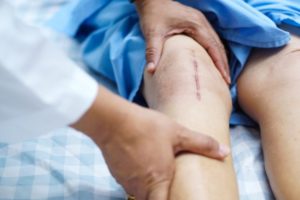 Your leg muscles may feel weak after surgery because you did not use them much with your knee problems. Surgery corrected the knee problem. Your home exercise program will include activities to help reduce swelling and increase your knee motion and strength. This will help you move easier and get back to doing the activities you enjoy. The quadriceps tendon, which is located above the kneecap, is typically cut and sutured back together during surgery. Physical therapy exercises that engage the quad muscles are essential to your healing, recovery, and pain reduction.
Your leg muscles may feel weak after surgery because you did not use them much with your knee problems. Surgery corrected the knee problem. Your home exercise program will include activities to help reduce swelling and increase your knee motion and strength. This will help you move easier and get back to doing the activities you enjoy. The quadriceps tendon, which is located above the kneecap, is typically cut and sutured back together during surgery. Physical therapy exercises that engage the quad muscles are essential to your healing, recovery, and pain reduction.
What To Expect After Knee Replacement
You can expect to be up on your feet within a day. That might be hard to do on your own at first. The quad is made up of 4 large muscles. When they are contracted, the knee straightens. The quadriceps tendon attaches the large quad muscles to the kneecap. The quad muscles and tendons are essential for knee stability and movement. After a traditional knee replacement, it typically takes 10 to 12 weeks for the quad tendon tissue to heal and it may take longer to regain all the strength and function.
Scar Tissue
After surgery, scar tissue builds up around the quad tendon and soft tissues. Scar tissue is important because it helps the healing process and protests the incision. But it also keeps you from being able to fully straighten your knee or bend it enough to get in and out of a chair. The scar tissue also prevents you from restoring a normal walking pattern. Because of how important it is to restore movement and function, your healthcare personnel will require you to do the following exercises throughout the day. Usually 1 to 2 minutes every 1 or 2 hours…
- Quad Squeezes – 1) Lie on your back on the floor or in bed and extend your recovering leg and bend your healthy leg at the knee. There is a reflex in the body that makes one knee flex when the other is extended. This reflex will be helpful when it is time to start walking. 2) Roll up a towel and place it under your recovering knee, allowing the knee joint to be slightly bent, activate the quad as you gently press the knee down into the towel. Hold the muscle squeeze for 5 seconds, then fully release it. This will help you make that muscle contraction more efficient, contracting, and releasing the muscle that encourages blood flow and gets muscle fibers working.
- Quad Short Arcs – Use the rolled-up towel again. Lie on your back with your healthy knee bent and the towel under your recovering knee. Tighten your quadriceps to press the knee into the towel. Lift the heel off the bed or floor without lifting the knee off the towel. Hold for 5 seconds, then lower your heel. Lifting the heel increases the resistance on the quad. It is helpful for increasing strength and improving the ability to strengthening the knee joint.
- Step-ups – This exercise will not happen until about 3 to 6 weeks after surgery. Stand upright in front of the set of stairs. Be sure and place one hand on the handrail. Lift your leg by bending your recovering leg and place your foot on the closest stair. Step up onto the stair pressing down into the stair and straighten the knee and hold for a few seconds. Slowly bend your recovering knee, lowering yourself back into the starting position, both feet on the floor. Do this exercise slowly to build muscle, and control and also to help prevent an accident.
Straight leg raises: This exercise will not happen until about 2 to 4 weeks after surgery. Lay on your back with your healthy knee bent and your recovering leg straight. Tighten the quad to straighten the recovering knee. Keep the knee straight and lift it into the air. Hold it for 2 or 3 seconds. Lower the leg so the heel touches the floor or bed before your knee does. This keeps the quad active during the entire lowering of the leg. Before each leg raise, activate your abdominal muscles so your core is engaged. This will help your overall fitness for walking on your new knee. - Wall Squats – This exercise will not happen until about 6 weeks or more after knee replacement surgery. Stand with your back against a wall. Place your feet hip-width apart and 12 to 18 inches away from the wall. Slide your back down the wall by slowly bending your knees to a 45-degree angle. Hold for 5 seconds. Your quads are just one muscle affected by knee replacement surgery. Additional exercise can help you strengthen your calf muscles and hamstring.
Besides your physical therapy program, you must leave time for walking. It helps build your strength and endurance. Walk around your home five times a day. Trips to the bathroom or kitchen are not enough. Gradually increase the distance you walk. Work up to walking outside and in the community. Always check with your doctor or therapist to make sure specific exercise is appropriate for your condition. If any exercise causes an increase in pain stops immediately.
For persistent joint pain that is interfering with your daily activities, see a Tristate rheumatologist to make the correct diagnosis and begin the proper treatment.
Contact Us (859-331-3100) For More Information to Request an Appointment
—
 About Tristate Arthritis and Rheumatology
About Tristate Arthritis and Rheumatology
Tristate Arthritis and Rheumatology is first and largest Rheumatology practice in the Northern Kentucky area. Founded by Dr. Arthur Kunath in 1986, our rheumatology practice now consists of six doctors who are board certified in both Internal Medicine and Rheumatology and a Physician Assistant. Patients see one doctor (except in emergencies), thereby assuring continuity of care and an individualized doctor-patient atmosphere giving the physician the ability to establish personalized and detailed relationships. Our doctors have received numerous awards, including being listed as “Top Doctors” in Cincinnati Magazine, receiving the Patient’s Choice Award, the Most Compassionate Doctor Award, and the American College of Rheumatology’s “My Doc Rocks” award.
>> Learn More


